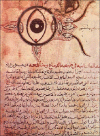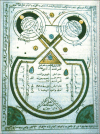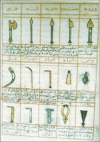Arab and Muslim scientists and their contributions to the history of ophthalmology
- PMID: 34085014
- PMCID: PMC8081083
- DOI: 10.4103/1319-4534.310407
Arab and Muslim scientists and their contributions to the history of ophthalmology
Abstract
Arab and Muslim scientists were pioneers in the development of medical sciences, treating patients, and performing operations in many medical specialties. This article reviews their major contributions in ophthalmology that led to the development of this field. Considering the little-known role of Arab and Muslim scientists in the history of ophthalmology, this article provide insights into the great physicians from the 10th to the 13th century. Despite the destruction of Islamic civilizations by the Mongols in the late 14th century, some of their books and manuscripts are still preserved, testifying to their influence, including the first detailed drawing of the eye anatomy by Hunayn AlAbadi (808 A.D.), proposing the first occlusive treatment for amblyopia by Thabit Alharrani (823 A.D.), discovering the science of optics and theory of vision related to light reflection by Al-Hasan ibn Al-Haytham (965 A.D.), inventing of the hollow needle used to aspirate cataract by Ammar Al-Mawsili (1010 A.D.), and drawing surgical instruments by Khalifah ibn Al-Mahasin (1256 A.D.).
Keywords: Arab; Contribution; History; Muslim; Ophthalmology.
Copyright: © 2021 Saudi Journal of Ophthalmology.
Conflict of interest statement
There are no conflicts of interest.
Figures



References
-
- Hirschberg J. Arabian ophthalmology. JAMA. 1905;45:1127–31.
-
- Al-Hassani ST. Muslim Hertiage in Our World. 2nd ed. United Kingdom: Foundation for Science, Technology and Civilisation; 2007. 1001 Inventions; pp. 174–7.
-
- Shaikh I Muslim Hertiage. Eye Specialists in Islamic Cultures, Foundation for Science, Technology and Civilisation. [Last accessed on 2018 May 15]. Available from: http://muslimheritage.com/article/eye-specialists-islamic-cultures .
-
- Sobotka H. Ophthalmology during the middle ages. AMA Arch Ophthalmol. 1957;57:366–75. - PubMed
-
- published by J. P. Wayenborgh Verlag, Germany; 1985. Translated into English by Frederick C. Blodi.
Publication types
LinkOut - more resources
Full Text Sources
